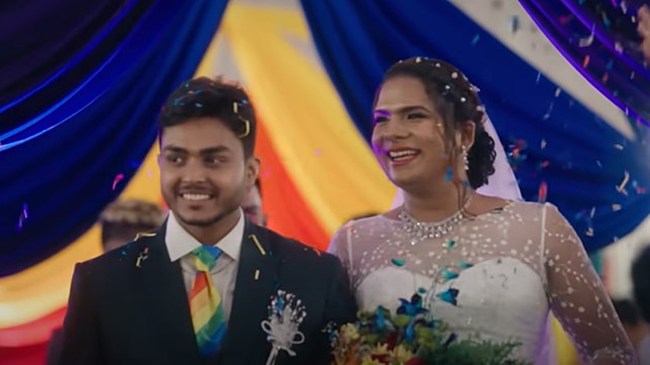Opinion Rainbow Rishta: Queer love in focus
Jaydeep Sarkar’s Rainbow Rishta delves into the everyday challenges faced by the LGBTQ+ community such as those of creating space, how their loved ones see them, the flaws in dating within the community, and the trauma of looking for love
 Jaydeep Sarkar’s Rainbow Rishta delves into the everyday challenges faced by the LGBTQ+ community such as those of creating space, how their loved ones see them, the flaws in dating within the community, and the trauma of looking for love. (YouTube/Prime Video India)
Jaydeep Sarkar’s Rainbow Rishta delves into the everyday challenges faced by the LGBTQ+ community such as those of creating space, how their loved ones see them, the flaws in dating within the community, and the trauma of looking for love. (YouTube/Prime Video India) The wholesome docuseries Rainbow Rishta takes viewers on a journey where discussions revolve around queerness, queer love, and the challenges that the community has inherited — and is fighting against. It is an innovative attempt to convey both the complexity of queer love and the idea that queer love can transcend physical intimacy. Simultaneously, it compels us to question whether what is portrayed in the series truly encapsulates the essence of queer love. Does the end goal of queer love also align with the conventional heteronormative institution of marriage? And is queer love confined to the monogamous understanding of love involving two individuals, similar to the heteronormative model?
Jaydeep Sarkar’s Rainbow Rishta delves into the everyday challenges faced by the LGBTQ+ community such as those of creating space, how their loved ones see them, the flaws in dating within the community, and the trauma of looking for love — something that many have been missing since childhood. All of these are, in turn, intertwined with societal expectations.
Queer people have always been careful when it comes to love. They have to ensure that the people around them are at ease with their presence. But queer love, like all else, is not solely about society; it is also about the individuals involved, their choices, and their worldview. Sarkar portrays this in the stories of Daniella and Joel and Soham and Suresh.
Through the story of Aneez and Sanam, Sarkar depicts the struggle of queer people to find a space for themselves, both metaphorically and literally. In Guwahati, while searching for an apartment, they face rejection because of their appearance and identity. Sarkar’s inclusion of t Xomonnoy seems a deliberate attempt at giving the queer intersectional feminist group recognition and letting queer individuals to learn about it. It is as if, in the quest for space within the story, Sarkar provides this platform for queer people to connect.
Even so, Sarkar has played it relatively safe in his portrayals. Queer love goes beyond the confines of monogamous relationships. It encompasses grey areas where it may not only be two people involved — and it is messy. Queer love can also be an asexual person trying to understand love in a society where love is synonymous with sex. And in a society conditioned to believe in heteronormative and monogamous relationships, queer love presents rebellion. It challenges conventional understandings of love and companionship.
The series doesn’t just paint a nuanced picture of queer relations. It also aptly portrays the need for the right to marriage within the LGBTQ+ community, at a time when the Supreme Court passed on the buck. We need more queer individuals to make themselves visible in society and make themselves heard through art and music so that we can begin and normalise conversations around queerness and the challenges faced by the queer community regularly.
The writer is a history postgraduate from Hindu College, University of Delhi






